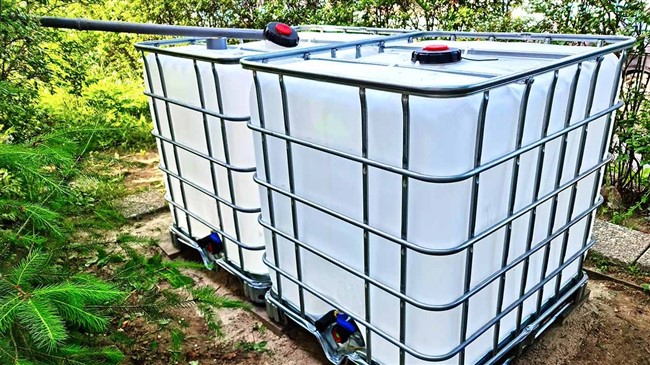SSZTD00 October 2023 IWRL1432
In the technical article, “How Low-Power 60-GHz mmWave Radar Sensors Enable High-Accuracy Sensing in More Applications Than Ever Before,” my colleague Kishore Ramaiah discussed how 60-GHz millimeter wave (mmWave) radar sensors are enabling high-accuracy sensing in industrial and consumer electronics applications. In this article, I’ll explore how low-power 77-GHz radar sensors can help sense other challenging applications reliably and accurately.
Traditionally, radar sensors in the 77-GHz frequency band have been used in advanced driver assistance system sensing applications such as blind-spot detection and automatic emergency braking, as well as level transmitters in industrial tanks. But there is also a growing need for proximity and distance sensing for off-highway vehicles, e-bikes, bicycles and parking barriers, where these sensors can enable safer working environments, improved comfort during operation and efficiency.
Industrial level sensors
Accurate and reliable level measurements are crucial in the oil and gas, chemical and petrochemical, water and wastewater management, food and beverage, pharmaceutical, and mining industries. Radar sensors using mmWave radar in the 77-GHz band help achieve high precision and resolution, even in challenging environments with complex reflections and interference.
The biggest advantage of radar sensors over older technologies is that they provide noncontact measurements of corrosive, abrasive or sticky substances. With an operational bandwidth from 76 to 81 GHz, the sensors can reliably detect small changes in substance levels and provide precise measurements at long distances or in the midst of turbulence, foam, vapors, dust, steam, temperature variations or moisture. The wide bandwidth allows radar chirps to have a larger difference between their starting and ending frequencies, increasing range resolution. Radar sensors thus help enhance safety in industrial settings, allowing remote level monitoring without the need for personnel to physically access hazardous or hard-to-reach areas. For battery-powered operations, low-power radar enables battery lives that last many years without maintenance.
The IWRL1432 is a radar device in the 77-GHz band that uses a low-power architecture to enable precise sensing for these applications. With a built-in deep-sleep mode, the IWRL1432 consumes <4 mJ per measurement, which leads to a very long battery life. These sensors have 11 dBm of output power per transmitter, which enable measurements from as little as 3 cm to more than 80 m. Complete integration of a hardware accelerator and a microcontroller into a small package eliminates the need for an additional microcontroller. Figure 1 shows industrial tanks that utilize radar sensors for level sensing.
 Figure 1 Industrial tanks
Figure 1 Industrial tanksE-bikes and bicycles
E-bikes have significantly gained popularity in recent years as a sustainable and efficient mode of transportation. Still, cyclists on both e-bikes and bicycles can be vulnerable to accidents when it’s not easy for others on the road to see them, particularly in low-light, foggy conditions.
Radar sensors such as the IWRL1432 enhance rider safety by providing forward- or backward-facing proximity alerts or collision detection capabilities. Radar sensors can alert riders or those in approaching vehicles through visual or auditory signals to warn them of potential collisions. Figure 2 illustrates a scenario where radar sensors would increase biker safety.
 Figure 2 Radar sensors increase biker
safety
Figure 2 Radar sensors increase biker
safetyParking barrier sensors
Sensor technology plays a crucial role in providing efficient and secure access control to parking areas. When installed near the entrance or exit of parking areas, infrared and ultrasonic sensors are used to detect the presence of vehicles. However, these sensor types have a limited range of detection and are often inaccurate in the presence of dust, temperature variations or sound waves.
Radar sensors such as the IWRL1432 overcome these limitations by providing an extended range of detection (>10 m) and a wide field of view (150 degrees), enabling access control at greater distances and wider entrances. They are also resilient in harsh environmental conditions such as rain and extreme temperatures. Radar sensors can differentiate between vehicles and people to ensure that they open for vehicles without being falsely triggered by pedestrians. It is even possible to easily integrate radar sensors into access control systems, gate controllers and parking management software.
Off-highway vehicles
Agricultural equipment, construction equipment and other off-highway vehicles use radar sensors to provide valuable information and assist with various tasks. They can detect obstacles such as trees and other machinery in the vicinity and help avoid collisions when maneuvering large and cumbersome equipment. Radar sensors can also measure true ground speed, which is important in uneven, loose terrain and mud. From people and obstacle detection to measuring ground speed and providing Safety Integrity Level 2 sensing in the 77-GHz range, the IWRL1432 radar sensor can help improve off-highway vehicle operation with increased efficiency and safety.
Conclusion
The 77-GHz IWRL1432 radar sensor enables designers to tackle challenges in sensing applications such as level transmitters, e-bikes, parking barriers and off-highway vehicles. Its low-power operation, reliability in various environmental conditions, wide field of view and accuracy can help you implement efficient and high-performance sensing solutions.
Additional resources
- Order the IWRL1432BOOST.
- Find development support, projects, documentation and tools in Resource Explorer’s Radar Toolbox for mmWave Sensors.
- Learn more about TI mmWave radar in Resource Explorer’s Radar Academy.
- Watch "Enable level sensing applications with TI low power mmWave radar."